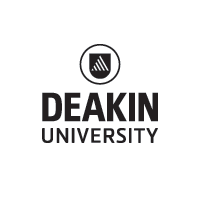Introduction
Much of this material is based on the book Ourselves stages 1 & 2: a unit for teachers, from the Science 5/13 Series (Roy Richards 1976, Macdonald Educational, Hemel Hempstead). Children are always interested in their bodies—in their weight, height, eye colour, leg length and in who can do something more quickly or more skilfully than others. In order to satisfy this interest they will have to question one another, take measurements, get one another to perform certain tasks, carry out tests, record information and make their findings intelligible to others. A number of these activities can be linked up with simple issues of health.
Key concepts of bodies and skeletons
Through studying bodies, students can be introduced to a range of measurement skills, and they can gain an idea of the normal range of human traits and an increased understanding of their bodies and how they function. However, one problem concerns the effect of comparisons on the obviously different child.
The activities in this topic are designed to explore the following key concepts:
Early years
- People vary a lot in each characteristic.
- Breathing is necessary for life.
- We need to breathe more when we exercise.
- Sight is an important sense.
- Having two eyes is necessary for judgment of depth.
- We use our ears to hear.
- Bones give our bodies shape.
- Bones provide places for muscles to attach.
- Bones protect important organs from damage.
- Bones and muscles allow us to walk, run and move, and to change our facial expressions.
Middle years
- The body contains numerous organs that function together to maintain life.
- The body contains organs that work together in systems (e.g. the skeletal, respiratory and excretory systems).
- Our breathing rate and pulse increase with physical activity.
- Fingerprints are unique.
- We use both ears to locate the source of sounds.
- To be able to smell the presence of an object, bits of that object must enter your nose.
- Genes from parents can determine some characteristics you have.
- Many animals have skeletons.
- Some animals have skeletons on the outside (exoskeletons) while other animals have skeletons on the inside (endoskeletons).
- Some skeletons are made up of bones.
- The shape of a bone can be used to identify its likely position in the skeleton.
- It is possible to gain information about how an animal may have moved by looking at the skeleton.
- The skeletons of particular types of animals are very similar to each other.
- It is possible to gain information about what the animal may have eaten by looking at the teeth in the skeleton.
- It is possible to gain information about the possible shape of an animal by looking at the skeleton.
- By comparing the skeletons of other animals to the human skeleton, it is possible to gain information about how the animals may have differed from or been similar to humans.
- The brain is essential for all human behaviours.
Students’ alternative conceptions of ourselves
Research into student’ ideas about this topic has identified the following non-scientific conceptions:
- Young children give egocentric explanations for parts of the body, as in ‘my hair is for washing’.
- Young children imagine their bodies as hollow skin bags that are all ‘stomach’ (a reservoir in which blood, food and wastes are somehow contained).
- For young children, the stomach is related to breathing, blood, strength and energy.
- For young children, food vanishes after it is eaten.
- Young children don’t associate the ear with hearing.
- Young children don’t think of the brain being needed for overt behaviour, such as physical actions or for telling a story, or that it is concerned with emotions or sensations.
- The brain is not essential for all human behaviours.
- Young children believe that skeletons are only to give us shape.
- Muscles are not related to meat.
- Light does not need to enter an observer’s eye to see something.
- We see because we look; it has nothing to do with light.
- The scent or odour from an object is something different to the particles that make up the object.
- The fingerprints on each finger of one’s hands are identical.
- Daughters inherit their characteristics from their mothers and sons from their fathers.
